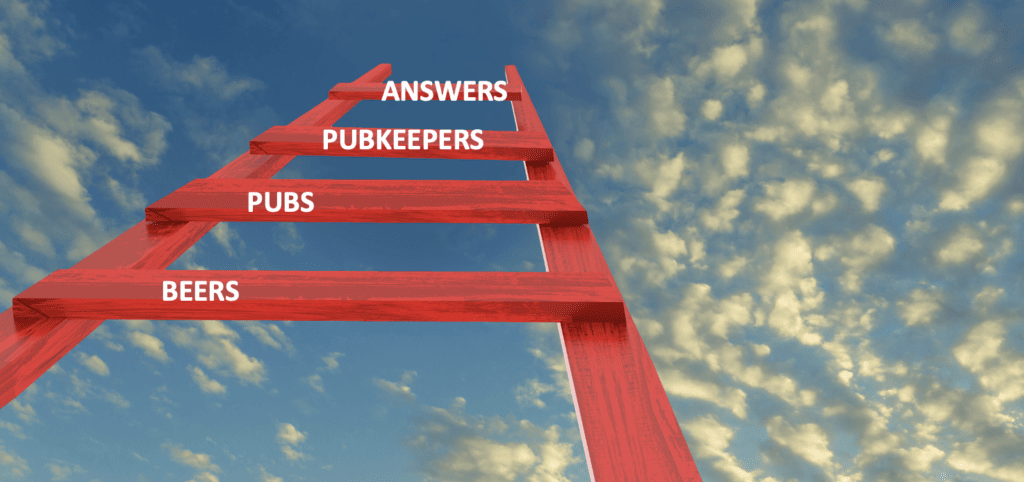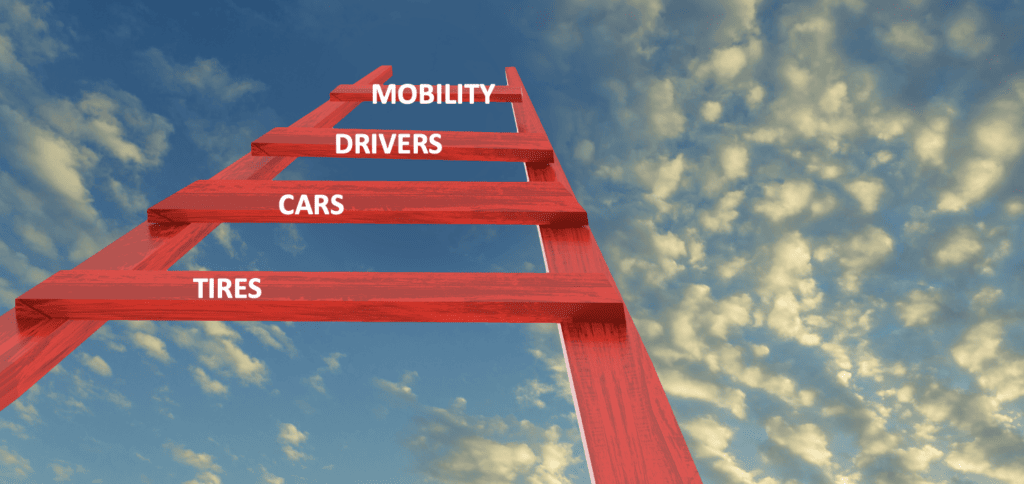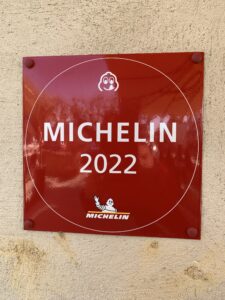
Ladder up your content marketing to capture your audience’s curiosity
Ladder up your content marketing to capture your audience’s curiosity.
When Sir Hugh Beaver, the Managing Director of the Guinness Brewery, attended a shooting party in Ireland, one of the hunters missed a shot at a golden plover.
That missed shot led Sir Hugh and his hosts to argue about, “What is the fastest game bird in Europe?”
Since this hunt happened in 1951 BG (before Google), no one had a ready answer. Even in Dublin, no authoritative answer to this question could be found in any reference book.
Curiosity conjures a best-seller
Sir Hugh’s burning curiosity about the question helped him hatch an idea. Guinness could create a book of authoritative answers, a book designed to settle arguments among drinking buddies.
Sir Hugh could see that authoritative answers held power to head off arguments and fisticuffs, settling disputes peacefully – so friends keep drinking Guinness all night long. That’s good for drinkers, pubkeepers, and the brewery.
Sir Hugh found twin brothers who were researchers, Norris and Ross McWhirter. He assigned them to compile the 198-page first edition of the Guinness Book of Records in only 13½ weeks. Talk about deadline pressure!

In 1955 Guinness launched the Guinness Book of Records, printing 50,000 copies.
The Guinness Book took off like a rocket.
- The next year it spread to the United States.
- In 1965 it became an annual publication.
- In 1972, it spun off a TV program on BBC, Record Breakers.
- In 1974, it became the biggest-selling copyrighted book in history, with nearly 24 million copies sold. (Only the Bible has sold more copies.)
- In 1987, the Guinness Book appeared in 31 languages.
- When Diageo acquired Guinness in 2001, it spun off the Guinness Book for $65 million.
Today the business of verifying world records is still thriving. If you want people to believe you set a world record, you’ll need to hire judges from Guinness to prove it.
Ladder up your content from products to people to purpose

How could a beer brand become the authority on world records?
All this happened because Guinness laddered up the topic of its content marketing from beers and pubs … beyond pubkeepers … to answers, authoritative answers to drinking buddies’ questions.
Similarly, André and Édouard Michelin manufactured bicycle tires in France in the late 1800s.
Even though they owned a leading brand of bike tires, they weren’t content. They had a big dream about something new that began to appear in France – cars.

Back in 1900, cars were novelties. But the Michelin Brothers could see that cars could change everything.
People would travel farther from home than ever before. They’d see new sights, try new things, and go to new places where no one they knew had ever gone before.
The Michelin brothers decided to pivot into automobile tires. The question was, how?
They came up with one of the great marketing ideas of all time – to create “a small guide to mobility” for drivers – the Michelin Guide.

They had tremendous confidence in their idea – enough to risk going very big. At a time when fewer than 2,900 cars roamed the roads of France, Michelin printed 35,000 copies of the first Michelin Guide.
And they gave them all away for free.
Everything drivers need to know
The Michelin Guide spread like wildfire, not only in France, but all across Europe – because it had everything drivers needed to know. Ideas about destinations, maps, information on customs and visas, and where to get a flat tire fixed.
In 1900, there were zero gas stations in France. So, the Michelin Guide showed drivers where to buy gasoline – from certain pharmacies. Drivers had to know which pharmacies handled gasoline since many did not.
Everything drivers needed to know appeared in the Guide. The Michelin Guide created curiosity and captured people’s attention.

Michelin sold people on the idea of buying their own cars, to gain the freedom to explore a bigger world. The Michelin Guide worked because it addressed a higher purpose of mobility, by suggesting places for drivers to explore.
If the Michelin brothers had had less imagination, they might have written a book about tires. But who would’ve read it?
They could have created a guide to cars – a topic that would spawn magazines, books, and the Grand Prix – a step up from the topic of tires.
Michelin could have elevated its brand further by profiling famous drivers.
But instead, they laddered up their content marketing to a bigger idea – mobility – the freedom to drive where your curiosity leads you.
By inspiring curiosity about mobility among non-drivers, the Michelin Guide drove the growth of automobiles. The French auto market grew 17-fold in the decade after the Michelin Guide appeared. By 1910, France had almost 50,000 cars.
The journey from marketing giveaway to a prized possession
In 1900, you could’ve gotten your copy of the Michelin Guide for free.
But in 1920, André Michelin walked into a garage where he found a car jacked up, sitting on a stack of Michelin Guides. Seeing this infuriated him.
So, he took all the ads out of the guide and put a price of 750 francs on the next Michelin Guide – about $2.15. Through this action, André became one of the forefathers of content marketing.
With Michelin Guides in hand, of course, drivers wore out their tires faster.
Michelin took another step up the ladder: in 1926, it began to award a star to restaurants deemed a “fine dining establishment.”

Today, Michelin stars can make or break a chef or a restaurant. Restaurants that are listed in the Guide, even those with no stars, proudly advertise the fact.
You can buy the current Michelin Guide for $30. It’s become the Bible for foodies, the first place to go to find a chic new restaurant.
The first-edition 1900 Michelin Guides were given away free.
If you’re lucky enough to have a copy of that first edition, keep it hidden. In 2020, an original first edition of the 1900 Michelin Guide sold at auction for 26,500 Euros – about $28,500.
How could a free marketing giveaway become worth so much? Because the Michelin Guide still piques people’s curiosity.
Economists call this creating subjective value (in contrast to an objective value, the commodity value of any object).
Things are worth whatever people are willing to pay for them in free markets – as the Significant Objects project demonstrated.
Subjective value drives premium prices
Most of the upside in your brand comes from its subjective value. Learn from luxury goods: add subjective value to command premium prices.
When you ladder up your content marketing from content about your product to your customers and users to a higher purpose, you create subjective value for your brand.
That means your brand can sell for higher prices and generate more profits than before.
That’s the payoff for laddering up your content. What higher purpose will your content embrace?

